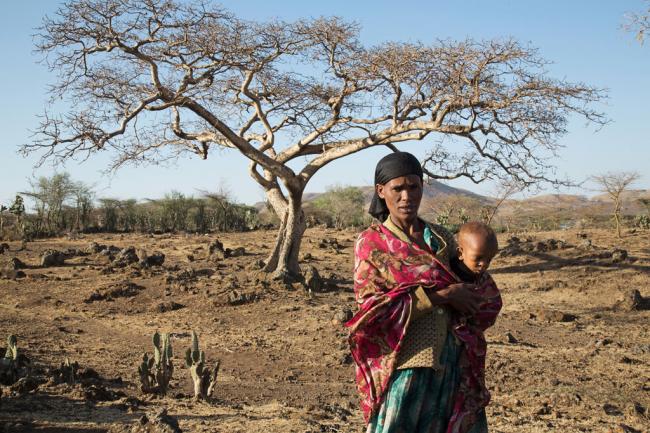
‘Worst case scenarios’ could become reality without more funding for El Niño response – UN relief chief
“I am here to sound the alarm. Again. We must act on Tuesday to help people whose entire way of life and survival is threatened,” Stephen O’Brien, the UN Under-Secretary-General for Humanitarian Affairs and Emergency Relief Coordinator, said in Geneva during a conference on responding to El Niño.
“We are here on Tuesday to make a global call for support and action. Sixty million people already require our urgent assistance on Tuesday, tonight, on Wednesday. Together we can avert the crisis from worsening. But the longer we wait, the longer and more costly our response will need to be,” continued O’Brien, underscoring that inaction also risked undermining decades of investments to development.
As a reminder, and to put that into perspective, he recalled that the El Niño of 1997-98 killed around 21,000 people and caused damage to infrastructure worth $36 billion.
“In this crisis we are not held back by political barriers, violent attacks or major access challenges. We must respond quickly to immediate, life-threatening needs, but we must also help people to become more self-reliant, and build individual and community capacity to respond to future shocks,” he stressed.
According to the UN, the current El Niño is one of the strongest on record affecting an estimated 60 million people including some of the most vulnerable in Africa, Asia, Central and South America and the Pacific.
The impact of El Niño-induced droughts is picking up in late 2016 and early 2017, and the situation could become even worse if a La Niña event – which often follows an El Niño – strikes towards the end of this year.
“El Niño has already severely affected the health and food security of so many families and communities across the world. I am deeply worried about rising acute malnutrition among children under five and the increase in water- and vector-borne diseases. People urgently need food, nutrition, water, sanitation and hygiene as well as health services,” O’Brien added.
Over the past months, UN agencies, governments, non-governmental organizations (NGOs) and other relief partners have stepped up El Niño-related preparedness and response work. The UN Office for the Coordination of Humanitarian Affairs (OCHA) indicated that response plans have been completed in 13 countries, requesting some $3.6 billion to meet critical needs for food and agricultural support, as well as nutrition, health and emergency water and sanitation needs.
But OCHA says the funding gap for the combined global El Niño-related response stands at over $2.2 billion. As some countries have not yet finalized their humanitarian response plans, this figure is expected to rise.
UN Assistant Secretary-General and UNDP Assistant Administrator, Izumi Nakamitsu, said it is critical to invest now to help ensure vulnerable communities can cope better with the next El Niño or other crises.
“This shows again the importance of humanitarian and development agencies working together to support national and local governments during crises, to identify the risks for future disasters and build resilience. We can predict most crises, which gives us an opportunity to invest in prevention, preparedness and disaster risk reduction to reduce or end humanitarian need,” Nakamitsu said.
O’Brien added that the World Humanitarian Summit, to be convened by the UN Secretary-General in Istanbul in a month’s time, on 23 and 24 May, provides a critical opportunity for the international community to change the way it manages climatic risks, including future El Niño and La Niña events.
Photo: OCHA/Charlotte Cans
Support Our Journalism
We cannot do without you.. your contribution supports unbiased journalism
IBNS is not driven by any ism- not wokeism, not racism, not skewed secularism, not hyper right-wing or left liberal ideals, nor by any hardline religious beliefs or hyper nationalism. We want to serve you good old objective news, as they are. We do not judge or preach. We let people decide for themselves. We only try to present factual and well-sourced news.







